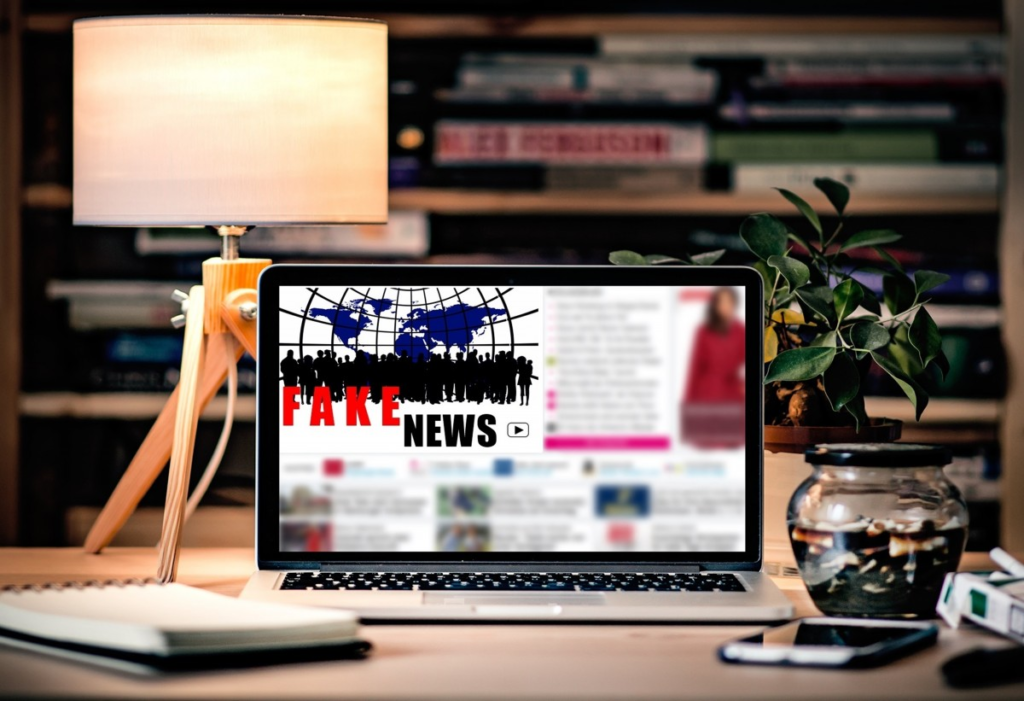On December 1, 2016, Edgar Maddison Welch walked into the Comet Ping Pong restaurant in northwest Washington D.C. and fired shots using an AR-15 rifle. Fortunately, no one was hurt in the attack, and Welch surrendered to police without further incident.
The reason for his brazen attack? Welch had been following online conspiracy theories which posited that the pizza restaurant had hidden in its basement the headquarters of a child-trafficking ring with ties to presidential nominee Hillary Clinton and her then campaign chief John Podesta.
Though Welch later received 48 months in jail for the attack, what could have been taken as a sobering commentary on the impact of misinformation was minimised with the vaguely humorous moniker 'Pizzagate.'
How Social Media Shapes Our Views
The notion that anyone could buy into conspiracy theories as absurd as Pizzagate is almost understandable when you consider that few of us are exposed to unbiased news sources anymore.
In the wake of the 2016 U.S. presidential election, for example, the Wall Street Journal carried out an experiment based on their belief that social media was shaping social views - and not necessarily in a positive way. According to the Journal:“Facebook’s role in providing Americans with political news has never been stronger—or more controversial. Scholars worry that the social network can create 'echo chambers,' where users see posts only from like-minded friends and media sources. Facebook encourages users to 'keep an open mind' by seeking out posts that don’t appear in their feeds.”
To test this theory, the newspaper set up two competing Facebook feeds: one that was made of news sources deemed to be shared frequently by 'very liberal' users (determined according to the methodology here) and one comprised of news sources shared often by 'very conservative' users.
The experiment, which is still available and updated today, allows viewers to see these views side-by-side on the topics of 'President Trump,' 'Healthcare,' 'Guns,' 'Abortion,' 'ISIS,' 'Budget,' 'Executive Order' and 'Immigration.' The results below were pulled on the topic of 'President Trump':

A simple glance at these examples show the striking difference between what users might see treated as 'news,' all because of the way they’ve been classified by social media algorithms. This is even more concerning when you consider that, according to the The University of Canberra’s Digital News Report: Australia 2016, 44.7% of Australian adults surveyed use Facebook to find, read, watch, share or discuss news - the most by far of any social network.
Combine our reliance on non-traditional news sources with a lack of vetting on their part, and events like Pizzagate and the spread of similar conspiracy theories begins to make sense.
How to Validate Information
If the news we’re exposed to online is controlled by who we are and how we think, being able to validate information takes on new importance. There are two components to this process: validating the source and validating the information itself.
Validating news sources
In years past, journalists were held - and held themselves - to strict codes of ethics. Facts were checked and stories were cleared through multiple levels of editors and managers before they ever saw the light of day.
The democratisation of the news through the internet’s ability to turn anyone into a newscasters has led to lower standards - though, in all fairness, journalists aren’t doing themselves many favours. We can just look to the recent coverage surrounding deputy prime minister Barnaby Joyce’s liaison with his now-former staffer, Vikki Campion, to see that professional ethics were breached on both sides of the table.If we can’t rely on news sources to police themselves, validating them becomes our responsibility. One tool in our arsenal for conducting these analyses is the chart below by MediaBiasChart.com:

Though the chart is biassed towards U.S. based publications, it’s worth a look. Did any of the placements on the chart surprise you? If so, you could be looking your own biases in the face.
One of the most important takeaways from the chart - besides the ability to compare your favourite news sources to others - is that it presents the different types of media bias that exist. Information isn’t only true or false; often, it’s incomplete, taken out of context or interpreted in an unfair way.
The chart itself divides news sources according to three criteria:
- Political bias, ranging from liberal, to moderate, to conservative.
- Overall quality, ranging from sources that use original fact reporting to those that contain inaccurate or fabricated info.
- Interpretation of the news, ranging from fair reporting to reporting the site considers to be 'damaging to public discourse.'
Use these factors as a guide to analysing any media sources you frequent that aren’t covered by the chart above. For example, you can ask yourself:
- Does the source I’m reading appear to have a political bias? If you have strong political viewpoints and the news you’re reading resonates with you strongly or provokes a strong negative reaction, it may be written with a political bias.
- Where does this publication get its data from? If the news sources makes any claims, it should back them up with appropriate sources. Scientific research papers or direct interviews are stronger sources, for example, than claims made without backup or those that have been taken from a biased source.
- How fairly is this information presented? Are both sides of an issue considered? Are assumptions made about the audience’s point of view? If so, the source may not be providing a fair interpretation of the news.
It’s important to get in the habit of thinking critically when consuming news - even from a source you believe to be reputable. In this day and age, it doesn’t hurt to be overly cautious.
Validating the information itself
It’s easy to see a news article or meme that resonates with you and to forward it without question. But in doing so, you aren’t just allowing yourself to be taken advantage of - you’re perpetuating misinformation to a larger audience.
In the week following the U.S. presidential election in 2016, pop culture website Buzzfeed made a startling discovery: that ‘fake news’ was shared more frequently than news by mainstream media. In the final three months before the election:
- The 20 top-performing false election stories from hoax sites and hyper partisan blogs generated 8,711,000 shares, reactions, and comments on Facebook.
- Within the same time period, the 20 best-performing election stories from 19 major news websites generated a total of 7,367,000 shares, reactions, and comments on Facebook.

Buzzfeed’s finding is confirmed by research out of the Massachusetts Institute of Technology (MIT) and published in the journal Science by Sinan Aral and his team, which found that:
“Falsehood diffused significantly farther, faster, deeper, and more broadly than the truth in all categories of information, and the effects were more pronounced for false political news than for false news about terrorism, natural disasters, science, urban legends, or financial information.”
Sad as it is to acknowledge, it should come as no surprise that in the Edelman Trust Barometer - an 18-year annual study of attitudes across 28 countries towards four pillars of society - found that Australian’s trust in the media decreased to a record low of 31% in 2018.
Staying safe from the scourge of fake news means taking steps to validate the information you encounter before sharing it. And that doesn’t just go for social media. How many of us have spouted off, 'I read recently that…' to our mates without having put in the legwork to fully vet what we’re sharing?
Asking yourself the following questions may help:
- When was this information published?
- How much do I trust the person or source sharing this information?
- Is this information framed in such a way as to provoke strong emotion?
- What sources are provided for any claims being made?
- Has the claim being made been debunked elsewhere (for example, on the website Snopes.com)?
- Could there be information missing that would better clarify the context of the content?
If you can’t confirm the validity of a piece of information, consider not sharing it at all.
Staying Across Our 24/7 Media Culture
Expectations that media should be freely accessed make it unlikely that we’ll ever return to an era of properly vetted journalism (at least, it’s unlikely in the near future). Unfortunately, this means that ‘fake news’ and other manipulative content (whether intentionally or unintentionally misleading) is here to stay.
In this environment, all of us have a responsibility to become more critical consumers of content. Question everything. Trust nothing. It’s the only way to avoid becoming part of the problem.
What are you doing to validate news sources and the information they share? Leave your suggestions in the comments section below:
Image Source: PXHere


Leave a comment
This site is protected by hCaptcha and the hCaptcha Privacy Policy and Terms of Service apply.